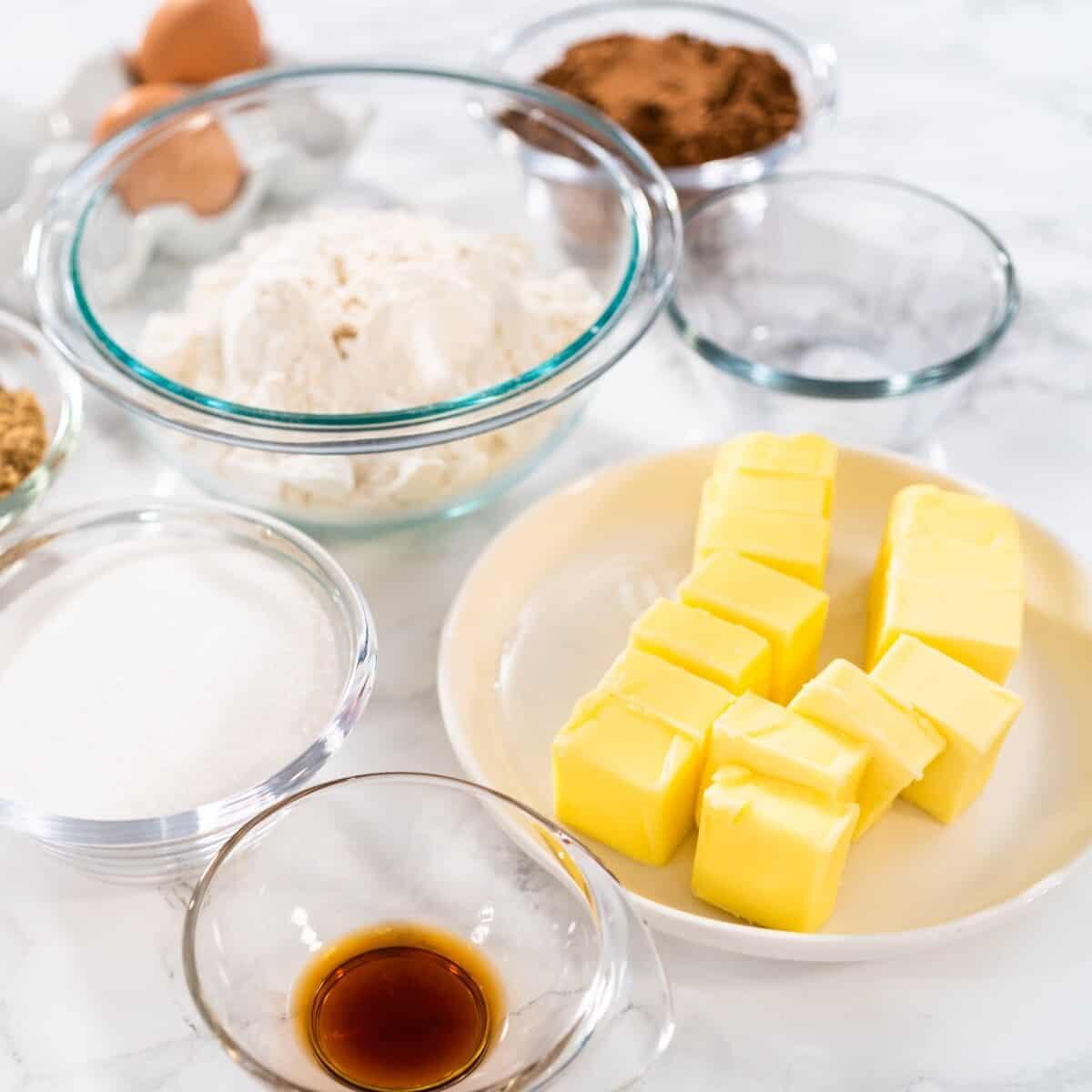
Knowing what to use as a butter substitute for cookies won’t just come in handy when you run out of the said ingredient.
You will also need to replace it in your baking recipes when you have lactose-intolerant, vegetarian, or vegan guests. Substituting butter is also essential when you want to reduce the amount of saturated fat in the cookies you serve.
You are watching: What Butter Substitute for Cookies Should I Use? Here Are 11 Options
With the many reasons why you might need to replace butter in your cookie recipe, I have divided my list into two. One includes ingredients you can use just because you run out of butter, while the other consists of those free from dairy and animal products. You’ll also find that some of the substitutes for butter included in any of my short lists are healthier options.
Jump to:
- 5 Best Butter Substitutes for Cookies
- 6 Dairy-Free, Vegan-Friendly Butter Substitutes for Cookies
- Replacing Butter in Your Cookie Recipes Without Worries
- Recipe
5 Best Butter Substitutes for Cookies
If you need butter substitutes simply because you run out of the said ingredient, whether you’re looking for one that’s already available in your recipe or an ingredient that you can easily grab at the nearest grocery store, I highly recommend the following:
1. Margarine
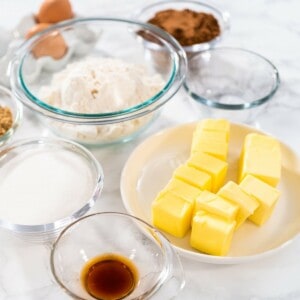
Yes, the margarine you love to spread on your quick breads and toasties and use when cooking fried rice and stir-fries is a great butter substitute in cookie recipes.
Not only is the consistency the same, but margarine is as flavorful as butter. I have also noticed that the cookie dough will hold its shape better when using margarine instead of butter.
But what I love most about margarine is that it contains a lower amount of saturated fat, making it one of the healthiest butter substitutes for cookies. That is, although different margarine products have different amounts of fat.
Thus, make sure you read the label and compare their nutritional profile if you want to use margarine with the lowest caloric and fat content.
I also love that some margarine products are already vegan-friendly, as they’re made from vegetable oil. Just be mindful that they’re still not free from dairy and lactose.
Now, whether you need to replace tiny blocks of butter or melted butter and chose regular butter or the vegan variety, simply add the same amount of margarine to your recipe. You might need to add more salt if your recipe calls for salted butter.
Best for just about anything.
2. Buttermilk

Serve soft, rich-flavored, more nutritious chocolate chip cookies, butter cookies, or any baked cookies by using buttermilk instead of butter.
Used in many recipes, from savory and sweet dishes to baked goods, I am sure most of you already have buttermilk in your fridge or pantry. But if you don’t have one, it’s one of the easiest to make using two pantry staples: lemon juice and fresh milk.
Simply add a spoonful of lemon juice to a cup of regular milk (or plant-based milk if you need a vegan option), mix, and allow to sit for at least five minutes.
To substitute butter in cookies with homemade or store-bought buttermilk, make sure you cut the amount the recipe calls for into two. That’s because buttermilk has more water content than butter. For instance, add half a cup of buttermilk to your baking recipe that requires a cup of butter.
But I understand that sometimes, you might unintentionally add more buttermilk than needed; say, you followed a 1:1 ratio. I have been in a similar situation a few times! Fret not because there is always a solution.
In this case, simply reduce the amount of water or any wet ingredients in your recipe. While the specific amount is quite challenging to determine, what I do is start with half the amount of what’s required in my recipe. Then, add a tablespoon at a time until I have the right dough consistency.
Best for just about anything.
Related: Buttermilk Blueberry Muffins
3. Greek Yogurt
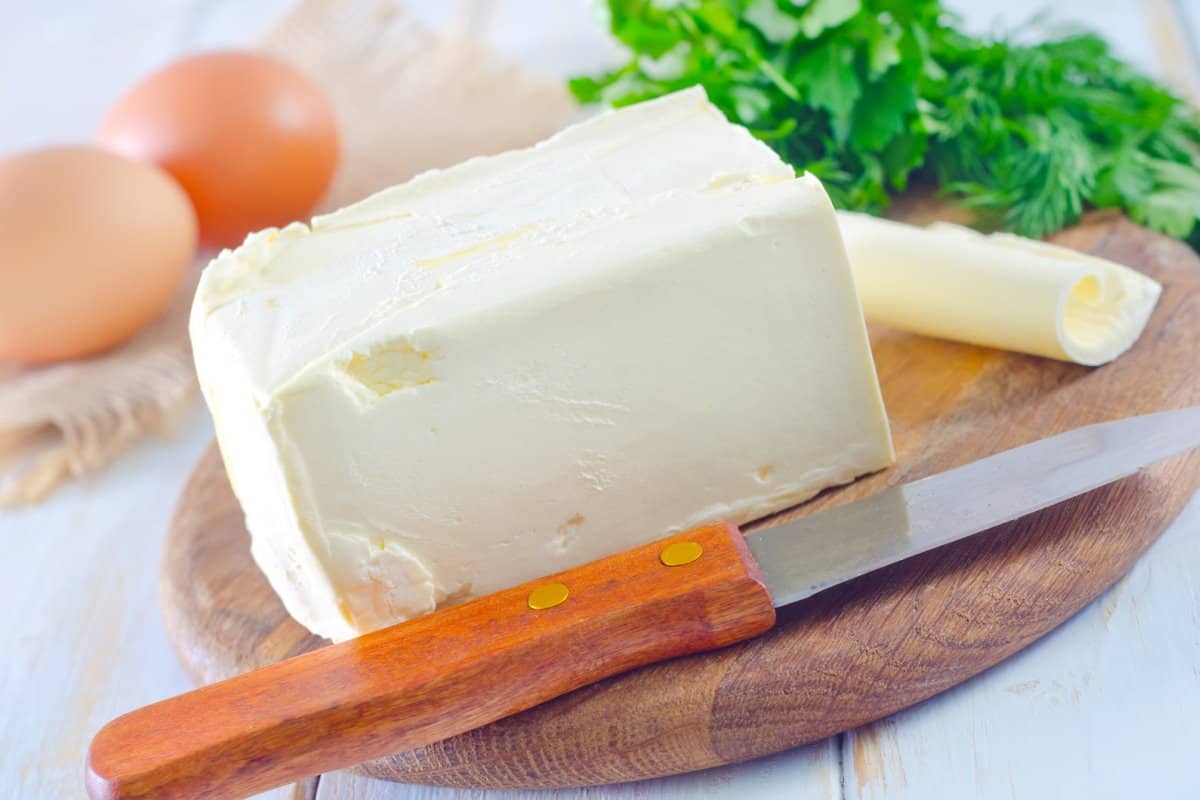
Yet another kitchen staple in most homes, plain Greek yogurt is a great butter substitute in cookies, not just because of the similar creamy mouthfeel it can give your baked goods. It’s also healthier than butter.
Greek yogurt adds protein to your baked goods and has lower caloric content.
I recommend using full-fat Greek yogurt to ensure you have cookies with the right amount of moisture and texture. After all, yogurt contains healthy fats.
When replacing butter with Greek yogurt, you can start by adding half the amount of what the recipe calls for butter. Then gradually add more of the Greek yogurt until you get the right consistency of the batter.
I just want you to keep in mind that Greek yogurt has a higher water content, so I highly advise you to make a few tweaks to your recipe. That is, reducing the amount of water or any liquid ingredient in your recipe. Hence, you must add half the required amount and then gradually add the ingredient.
Now, if what you have at home is flavored yogurt, you can use it as long as its flavor won’t affect the overall balance of flavor. For instance, using strawberry-flavored Greek yogurt in your chocolate chip cookie recipes is fine because the two flavors complement each other.
Best for just about anything.
Related: 13 Best Sour Cream Substitutes for Health-Conscious Cooking
4. Shortening

Read more : Easy Soap Recipes for Beginners
Yes, butter and margarine are types of shortening, but we’re referring to other shortening products. You can choose from those made from animal fat, vegetable oil, or a combination of both.
This butter substitute in cookies has high-fat content and, of course, calories, so ensure this isn’t a problem for you and your guests before using it.
I love using animal-fat-based or vegetable shortening when I like to bake more tender and taller cookies that will surely melt in my guests’ mouths. Its creamier texture also adds rich flavor to my cookies!
To use, I simply add the same amount of shortening as what the recipe calls for unmelted or melted butter. Then, I tweak the amount of water or any wet ingredient listed in the recipe because shortening lacks moisture. You will know when to stop adding more liquid as the batter becomes easier to mix and scoop.
Another issue with shortening is it doesn’t have any flavor at all. But what I do is add more vanilla extract, sugar, peanut, chocolate chip, or other flavoring the recipe requires.
Best for just about anything.
5. Ghee

Ghee or clarified butter is an excellent butter replacement if you’re looking for an ingredient with a texture and flavor that’s very close to butter. What I love most about ghee is its nutty flavor, making it perfect for adding flavor to mild-flavored, nut-flavored, and even classic chocolate chip cookies!
Also, since ghee is clarified butter, it’s a perfect option for those looking for an ingredient with lower lactose content. The clarifying process the butter underwent also increased the ghee’s smoke point.
It means that you won’t have to worry about it being overcooked or burnt when used in baking cookies that require extended baking times.
However, you must not opt for clarified butter when you need to reduce your cookies’ fat and caloric content.
That said, to substitute butter in cookies with clarified butter, simply add the same amount as what the recipe requires. I also suggest reducing the amount of water or any liquid ingredient in your recipes because ghee has a higher moisture content than butter.
Best for just about anything.
6 Dairy-Free, Vegan-Friendly Butter Substitutes for Cookies
While my highly recommended butter substitutes above can work for many baking recipes, if not all, you surely will have days when you will have guests with dairy allergies and/or following a vegetarian or vegan diet.
Like with most recipes, you won’t need to search your cookbook or think of a new recipe because there are dairy-free and vegan-friendly alternatives to butter. Here are my favorites:
1. Olive Oil
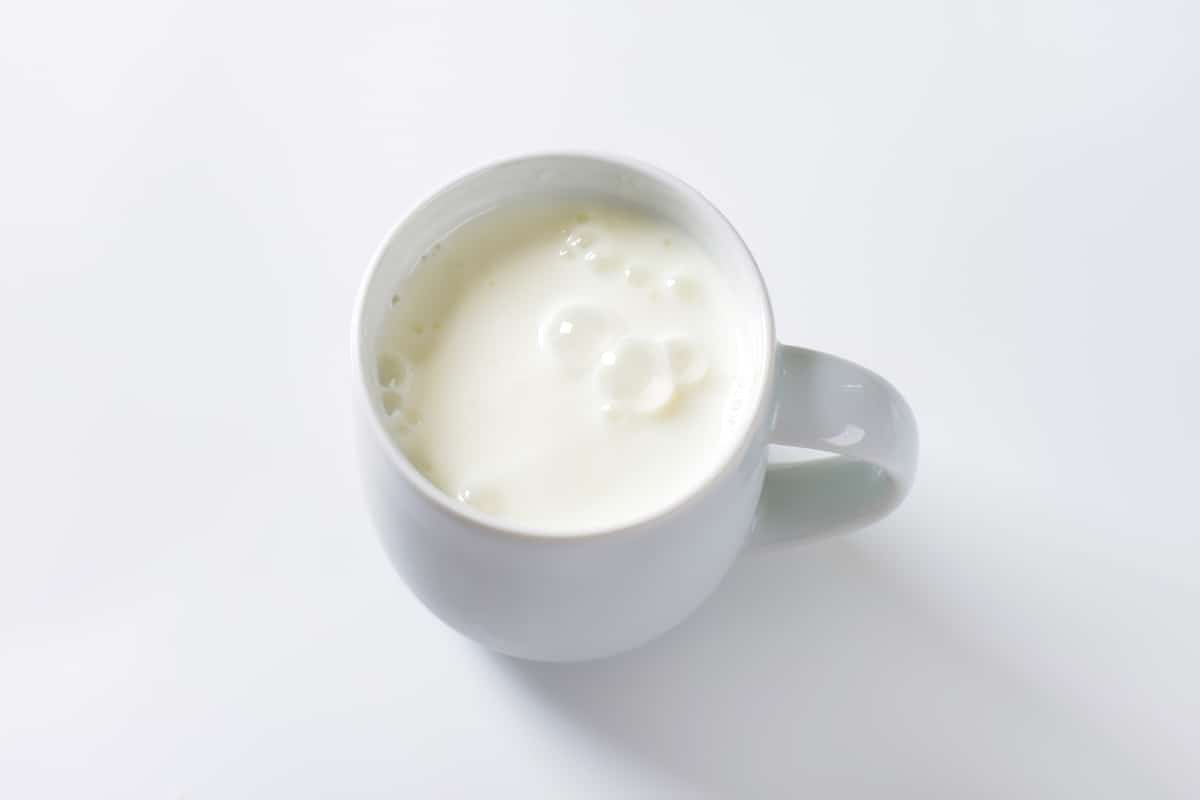
Olive oils, especially extra virgin olive oil, have long been used by many professional chefs and home cooks as cooking and baking substitutes for butter and other vegetable oils and shortening products. Surely, you also use it in most of your salad dressing recipes.
However, I have two issues with olive oil that I want you to keep in mind when using it as a substitute for butter.
One, which most of you would surely agree with, is its distinct flavor that can sometimes overpower some ingredients. It’s why I only use it in recipes with strong-flavored ingredients like cocoa, chocolate, and peanut butter. You can also use light-flavored olive oil products.
Another is that most olive oil products have a mid to low smoking point. Why is this an issue? Well, it means that olive oil cooks quicker than butter or other vegetable oil products.
Exposing it to high temperatures for extended periods can lead to an overburnt olive oil that can affect your cookies’ tasty flavor. For this reason, I love using it in this quick air-fryer cookie recipe.
When using it as a butter substitute for cookies, you will also need to make sure you add the olive oil and mix it with the dry ingredients before adding the wet ingredients. I have found that this technique helped evenly distribute the olive oil, which gave me cookies with similar textures and moistness.
In terms of the substitution ratio, add three-fourths of the amount the recipe requires for melted butter. If you’ll use it in recipes with bland or simple flavors like sugar and oatmeal cookies, only add half the amount required.
Best for quick-bake, strong-flavored cookies baked at low temperatures.
2. Coconut Oil

Do you want to add a lovely coconut flavor to your sugar cookies or even to your classic chocolate chip cookies? Then swap out that butter with the same amount of virgin coconut oil lying around your pantry.
Do you want a more subtle tropical flavor because it might throw off the balance of flavors in your recipe? Then, opt for refined coconut oil, which has lower bad cholesterol and lauric acid content than virgin coconut oil.
Whichever you choose to use as a butter substitute for cookies, virgin and refined coconut oil products will also add natural sweetness to your recipes.
That’s why I sometimes reduce the amount of sugar or any sweetener in my recipes to half the amount required. For instance, I just add a cup of brown sugar to my sugar cookies requiring two cups of the said ingredient.
Best for sugar, strong-flavored, and coconut-flavored cookies.
3. Applesauce

From the substitutes for butter with fat, let’s move on to a fat-free and low-calorie option that some of you might be surprised to find in this list: applesauce. Despite the absence of fat, you will still serve delicious cookies with the right texture and moistness.
I highly recommend opting for unsweetened applesauce because apple already has a natural sweetness. If you’ll use applesauce products with added sugar or any sweetener, you might end up with overly sweet cookies if you’re not careful.
Read more : Skillet Chicken Lasagna
To use, I only add half the amount of what the recipe requires for butter because applesauce has water content. If you’ll use sweetened applesauce, make sure you reduce the amount of or completely remove the sugar or any sweetener in your recipes.
One important tip I want to share is to make sure you bake your cookies a little longer than you usually do to cook the apples properly. That is especially if what you have is a can of chunky sweetened or unsweetened applesauce.
If you want to have control over the sweetness and chunkiness of your applesauce, go ahead and make your own applesauce. Simply slice up some apples, place them in your blender or food processor, add a tiny amount of water, and pulse until you achieve the applesauce consistency you need.
You can add sugar if you want or need to, even cinnamon or other spices if you think it can help enhance the flavor of your baked cookies.
Best for just about anything.
Related: Need an Applesauce Substitute in Baking? Here Are 10 Options!
4. Mashed Banana
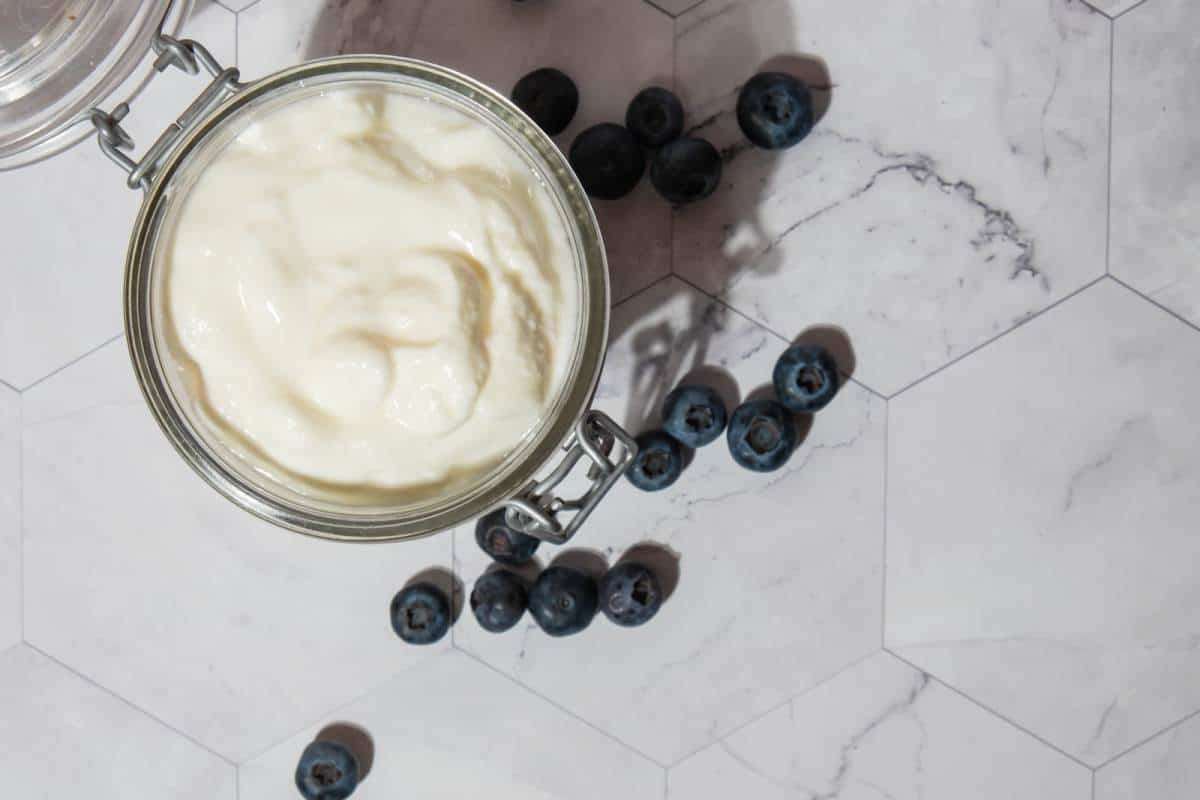
Another nutritious and unhealthy-fat-free butter substitute for cookies you can easily make at home is mashed banana. It has the same creamy texture as butter and won’t fall short when it comes to the moisture your cookie recipe needs.
Like applesauce, add half the amount of what the recipe lists for butter when using mashed bananas as a substitute. Mashed bananas also have a natural sweetness to them, so you might want to reduce the amount of sugar or any sweetener in your recipe.
I also want you to be mindful of the banana flavor you might be adding to your recipes, especially if you’ll use more than a cup of mashed banana. Yes, it can enhance the flavor of your cookies, but it can also overpower some flavors. Just make sure its natural flavor meshes well with your recipe’s ingredients.
Best for plain, fruity-flavored, and strong-flavored cookies.
5. Mashed Avocado

If you need a high amount of fat to serve tender cookies but want them to be healthier, mashed avocado is a great option because it’s rich in healthy fat. It also has a consistency similar to butter and will add the right amount of moisture to your recipes.
However, you can’t use it in many cookie recipes because of its color and flavor. I love using it in my dark-colored, strong-flavored baked goods like coffee and chocolate chip cookies. Not only will the coffee, cocoa, and regular or dark chocolate cover up the avocado’s green color and flavor, but the combined ingredients will give my cookies a richer flavor.
So, how do you use mashed avocado in your cookie recipes? Like applesauce and mashed banana, add half the amount of what’s listed in your recipe for butter. There is no need to make any adjustments to the sweet and wet ingredients.
Best for dark-colored, strong-flavored recipes.
6. Pumpkin Puree

Why wait for Halloween to use that pumpkin puree stored in your pantry or fridge when you can use it to replace the butter in your recipes?
Like applesauce and mashed fruits, pumpkin puree has a consistency similar to butter. Also, it has a higher amount of moisture and natural sweetness, so you will need to add three-fourths of the amount required for butter in your cookie recipes.
Yet again, I sometimes follow a 1:1 substitution and simply reduce the amount of liquid and sweet ingredients in my recipes.
What I love most about pumpkin is its nutty taste that will remind you of a buttery flavor. Using it will not only make it feel like your recipe is missing the butter, but pumpkin puree will also enhance your cookies’ flavor.
Now, the bright orange color of the pumpkin might be an issue for some of you. In this case, only use pumpkin puree when baking cookies with strong colors.
But let me tell you this; orange-colored cookies make them look more appetizing, especially for kids. And, if it’s Halloween and autumn season, they’re the perfect cookies for any gathering, party, or event!
Best for just about anything.
Replacing Butter in Your Cookie Recipes Without Worries
With my list of the best butter substitutes, you can serve the best chocolate chip cookies, sugar cookies, and other cookies you love serving your family and friends. While some might require a little recipe tweaking, they won’t require complicated adjustments that will take too much of your time.
From the most easily accessible and basic ingredient substitutes to those you can also whip up in your kitchen with simple ingredients and tools, you will surely have something to use without affecting your cookies’ texture, moistness, and delicious taste. In fact, some of them can even enhance the richness of the flavor!
Just make sure you choose the butter substitute for cookies that will work well with your ingredients and meet the specific dietary requirements of one or more of your guests.
You May Also Like:
Can You Put Butter in an Air Fryer?
15 Easy Cookie Recipes With Chocolate Chips
What Is the Best Substitute for Vegetable Oil in Brownies?
What Is the Substitute for Shortening in Cookies?
Recipe
Source: https://gardencourte.com
Categories: Recipe

